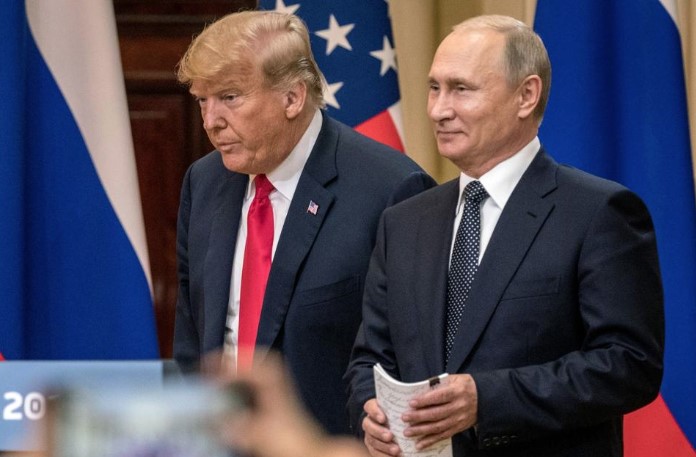Just days after high-profile meetings and promises of a peace plan, missiles tore through a factory in western Ukraine owned by an American company. The site, far from the frontline and close to the Polish border, was struck in one of the most aggressive attacks since the war began more than three years ago. The assault killed at least nine civilians and injured nineteen others.
A Strike That Shattered the Diplomatic Stage
The choice of target left little room for doubt. The factory, operated by an American-owned firm, was viewed as more than just a workplace. It symbolised foreign investment and support for Ukraine. The attack sent a direct message that Moscow was not interested in lowering tensions, no matter how many photo opportunities, handshakes, or mentions of a peace plan had taken place in recent days.
This strike also came at a critical moment. Only a week earlier, there had been much talk about a potential peace plan breakthrough. Promises of dialogue, summits, and ceasefires had filled headlines. Yet the sudden violence made it clear that the gap between words and reality was growing wider by the day.
Deadly precision: Ukrainian drone-laser combo kills 5 Russian sailors in Kherson Oblast
A Peace Plan on Paper, But Not in Practice
The peace plan was announced with much fanfare. The idea was to bring the leaders of Russia and Ukraine together at a table, with the United States acting as mediator. There was even talk of a three-way summit that could mark the start of a ceasefire. For a moment, it seemed like the conflict might see a diplomatic opening.
However, none of the proposals tied to the peace plan were ever put into motion. No summit dates were set. Ukraine did not agree to terms. Russia did not change its stance. In fact, Moscow doubled down, both with military escalation and by using diplomatic tactics to delay meaningful negotiations.
Russian officials suggested a long process of talks involving multiple technical experts and committees. This is a familiar pattern — dragging out discussions to buy time while continuing operations on the battlefield. The strategy makes it clear that Russia believes time is on its side.
Despite this, the peace plan continued to be framed as a success story. Public statements often described Russia as a partner that was ready to deal. But the reality on the ground told a very different story, as shown by the missile strike in western Ukraine.
Mixed Signals and Weak Pressure on the Peace Plan
Adding to the confusion were mixed signals from Washington. On one hand, there were claims of being close to a peace plan breakthrough. On the other, social media posts suggested that Ukraine could not win the war without striking inside Russia, contradicting earlier statements that opposed sending long-range missiles. This inconsistency left allies puzzled and raised doubts about whether the peace plan had any real structure behind it.
US considers sanctions on Rosneft and Lukoil if ceasefire talks with Putin fail
At the same time, new military support for Ukraine slowed down. Instead of directly supplying weapons from stockpiles, the United States chose a model where weapons were sold to European partners, who then passed them on to Ukraine. Prices were raised by ten per cent, making the process more costly. While this kept supplies flowing, it also made clear that there was hesitation about direct involvement in supporting the peace plan.
Sanctions against Russia were also limited. The only new measure introduced was tariffs on another country for importing discounted Russian crude oil. Larger buyers of Russian energy, such as China, were not targeted. This selective approach added to the impression that the peace plan was not being matched with the necessary pressure.
Ukraine and Europe Caught in the Middle
Ukraine made its stance clear: it would not accept any deal that involved giving up territory. Suggestions of land swaps or redrawn borders were seen as legitimising occupation. However, some negotiators involved in the process floated these ideas, showing how far apart the sides really were and how weak the peace plan actually looked in practice.
Confusion also marked the question of security guarantees. Russia suggested that it could act as a guarantor of Ukraine’s future security — a proposal that was widely dismissed in the West, given that Russia was the very country carrying out the invasion. Such contradictions made the peace plan even harder to take seriously.
Symbol of strength — stealth bomber and F-22 jets dominate skies at Trump-Putin summit
European governments, meanwhile, tried to support efforts for post-war reassurance. Yet there was hesitation about making firm commitments without clarity from Washington or genuine cooperation from Moscow. Proposals for a European-led force remained vague, and without strong backing, they had little chance of deterring further aggression.
Behind the scenes, officials admitted that the peace plan was nowhere close to being realised. Despite optimistic public statements, there was recognition that the diplomatic process lacked traction. The missile strike on the American-owned factory made that clearer than ever.
While photo opportunities and handshakes painted an image of progress, the facts showed something else: Russia had not stepped back, Ukraine had not agreed to compromise, and Europe remained cautious. Most importantly, ordinary people in Ukraine continued to pay the price with their lives, as missiles fell even in regions far from the frontline.

